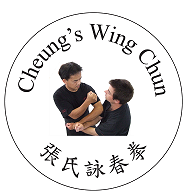The title here is a bit ambiguous in English but it is not when it is in Chinese. However, even in both languages the meanings need a thorough explanation, if it is going to be beneficial for the practitioners.
The word ‘Art’ here, relate to Martial Arts – All Martial Arts ! – in TWO PARTS
Lets take the 1st part – the Art’s engine 拳功 (kuen Gong- short for gong 功):
This simply refer to how you generate power within your own body through the understanding in the law of physics, especially where it concerns different forces: different type of forces enhance techniques immensly. Externally, do practice breathing with calmness and internally, try to be aware of your own body structure (i.e., visualise the skeletal make up, all working muscles, fatal organs, etc) whenever you are moving. With time and practice,you will be faster, stronger and calmer once you understand how to create strength or power -i.e., the Art’s engine capability 拳功. In order to achieve all the above required a lot of practice over a long period of time (i.e., Good Kung Fu 好功夫)!
For example, an incoming hook can be diverted/disapate the swinging force to somewhere away from your fatal organs by simply just change your position(using footwork). Another example, using the muscles within the arms (guard hand) to cushion the incoming blow, preferably with retreating or angular footwork to further diminish the incoming force. These are defensive examples that use Yielding as the primary method in dealing against strong force or large impact force (i.e., against a very strong assailent).
The body of a seasoned or skilful practitioner can utenlise its body weight (partly or entirely) to any direction, though normally aim at a specific target. In addition, he or she can generate power/strength through rotation轉, lifting提, sinking沉,exploding吐, spreading攤,collasping壓,expanding發, slipping漏,sudden acceleration急速, curving旋,flexing弹, and so on…. All these verbs (doing words) acts as an indication or a reminder on how to execute a particular move: for example, execute Wing Chun double punch with suddend acceleration急速雙線拳.
In addition, understand how all the joints around the body works and how the spine flex under various conditions help to realise one’s strenght and weaknesses. In this case, the ‘strength’ here refer to a combination of muscles and the skeleton make up that increases the power of that technique- for e.g., throw a verical punch while flexing your core and spine at the same time can increase penetrating impact to the target. In order to generate power or entire unit(the whole of you)strength will need a stable platform to initiate such a task. This usually means from the ground up and transmit the energy via your body to the weapon hands/feet 力從地起、剛柔並用.
拳功 ‘Kuen Gong’ (short of gong 功)- so far this ‘engine’ means the practitioner of any art will need to work hard to achieve, at the very least, entire muscle strength to some degree plus proper breathing and relaxation techniques. There are all types of engines: economy engine/turbo-charged/Super-charge etc…. All give different outcome or effectiveness. In terms of Martial Arts, this relate to the inherited ability (given by God), intelligent and age. For example, if you are talented who naturally have a good physique and very very bright with a good personalilty; then you would go far.
Logically, majority of people are of average quality, but with a good engine or good Gong 功; your technique 拳法 will improve imensly.
The Chinese has an idom to remind the practitioner of what he/she must do if embark on any martial arts endeavour. 練拳不練功、到老一場空! – loosely translated ‘ If you just practice techniques and not its ‘engine’, when you get old; you have nothing!’ from your chosen art.
2nd Part -Art’s techniques 拳法 ‘Kuen Fa’ (short for ‘Fa’ 法).
Techniques are really ways to deal with a certain problem(s) at a given moment. Normally involve the use of hands and feet and positional change. Each technique require time to learn its accurracy and is relevant in a specific condition: for e.g. normal guard hand against incoming fist, if it is not accurrate, the punch may damage the guard’s hand bone structure. There are many techniques in any art. This mean the practitioner can spend many years to acquire those techniques.
The origin of techniques of any Martial Arts are the sum knowledge that had been past down from survival experiences and years of modification to bring about its effectiveness. Pure traditional Martial Artists tends to have a strong view of their own and regard any modifications unworthy. However, human beings are also evolving with time. With good nutrition and medical advances, martial artists today are much stronger and faster than those half a century ago. This enviromental changes may render some techiques out of time. In short, use whatever that works for you.
The major problem of learning techniques is finding a good teacher (Sifu, Sensei, Master etc) who can lead you the correct path: save you a lot of money and time. If he/she is not knowledgeable, the bad habits can developed. Sometimes, even with the intention of a good Sifu, if the class is too big, he or she may not be able to see everyone’s mistakes. So, techniques does require the students to ask questions on their part in order to ensure the correct path of learning. If you don’t ask, then your teacher doesn’t know.
Having acquire the techniques, most practitioners dwell on the how and not pay attention to the accurarcy of forms(i.e., the source of creating ‘engine’ 功) and regard them merely some kind of display. If you ignore the details, then you can loose a lot within your art! Forms are there for a reason…
In short, a serious practitioner MUST learn BOTH.
